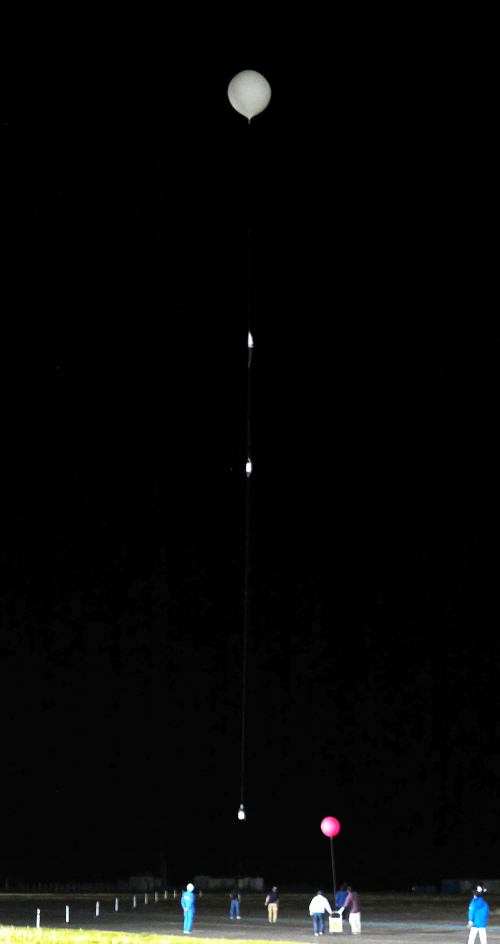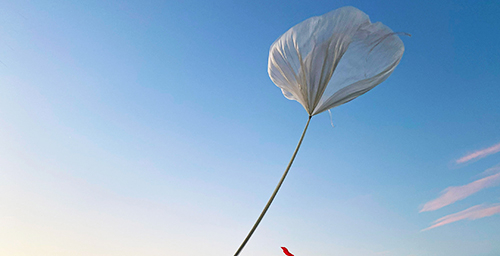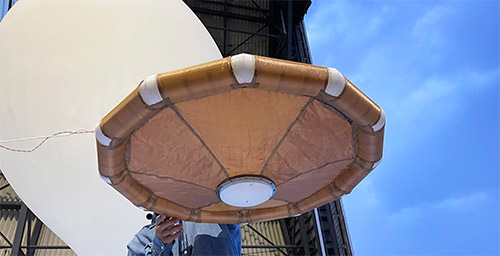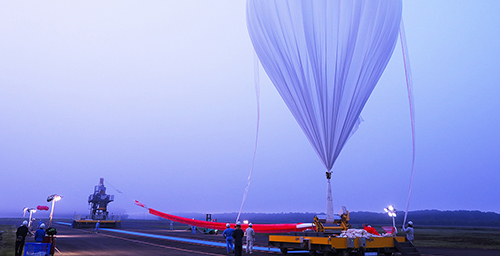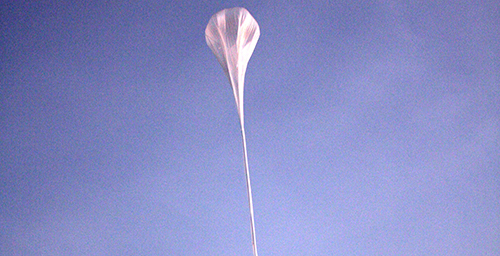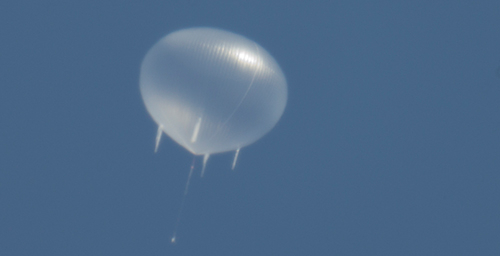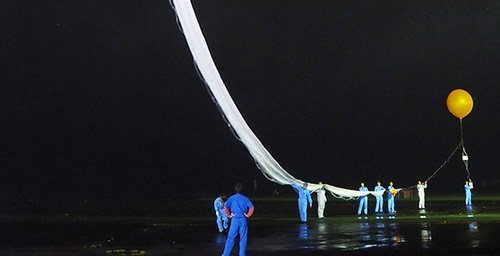The Japan Aerospace Exploration Agency (JAXA) conducted the scientific balloon flight BS25-02, as part of the 2025 scientific balloon campaign, at the Taiki Aerospace Research Field. The balloon was launched on 6 June 2025, at 0:00 JST for the purpose of testing the performance of a preliminary technology developed for a precise verification of general relativity. The balloon was a rubber balloon with a maximum inflated diameter of 11m, and ascended at a rate of approximately 320 m per minute.
1 hours and 33 minutes after launch, the balloon reached its highest altitude of 30 km over the Pacific Ocean, approximately 60 km east from the Taiki Aerospace Research Field. The balloon and the oboard equipment slowly descended onto the sea, landing approximately 100 km east from the Taiki Aerospace Research Field.
Regarding the preliminary experiment (III-1) toward a precise verification of general relativity based on laser frequency transfer, further research will now be conducted through the thorough analysis of the data obtained in this flight.
At the time of launch, the ground weather conditions were: weather: sunny, wind speed: 1 m/s, and temperature: 12 degrees Celsius.
※ Research overview
The ultimate goal of this research is to verify the theory of general relativity with high precision by comparing the optical frequency of an extremely-precise frequency-stabilised laser carried by a scientific balloon with that of a ground-based laser. Recent rapid advances in highly stable and accurate frequency comparison technology have opened the door to testing general relativity with an accuracy surpassing that of satellite-based experiments. In 2023, a piggyback balloon experiment successfully demonstrated high-precision positioning at stratospheric altitudes. In a subsequent balloon flight in 2024, an optical link was successfully established by transmitting infrared laser light from the ground to the balloon, aided by high-precision positioning. Building on these achievements, the third stage of this preliminary experiment will demonstrate technologies to improve the ground station's balloon tracking performance, thereby enhancing the quality of the optical link. This includes real-time correction of transmitted laser direction using images captured during flight. Two flights will be conducted in this balloon campaign to verify performance under different atmospheric conditions.
Ascending rubber balloon BS25-02 and its onboard equipment (credit: JAXA)

